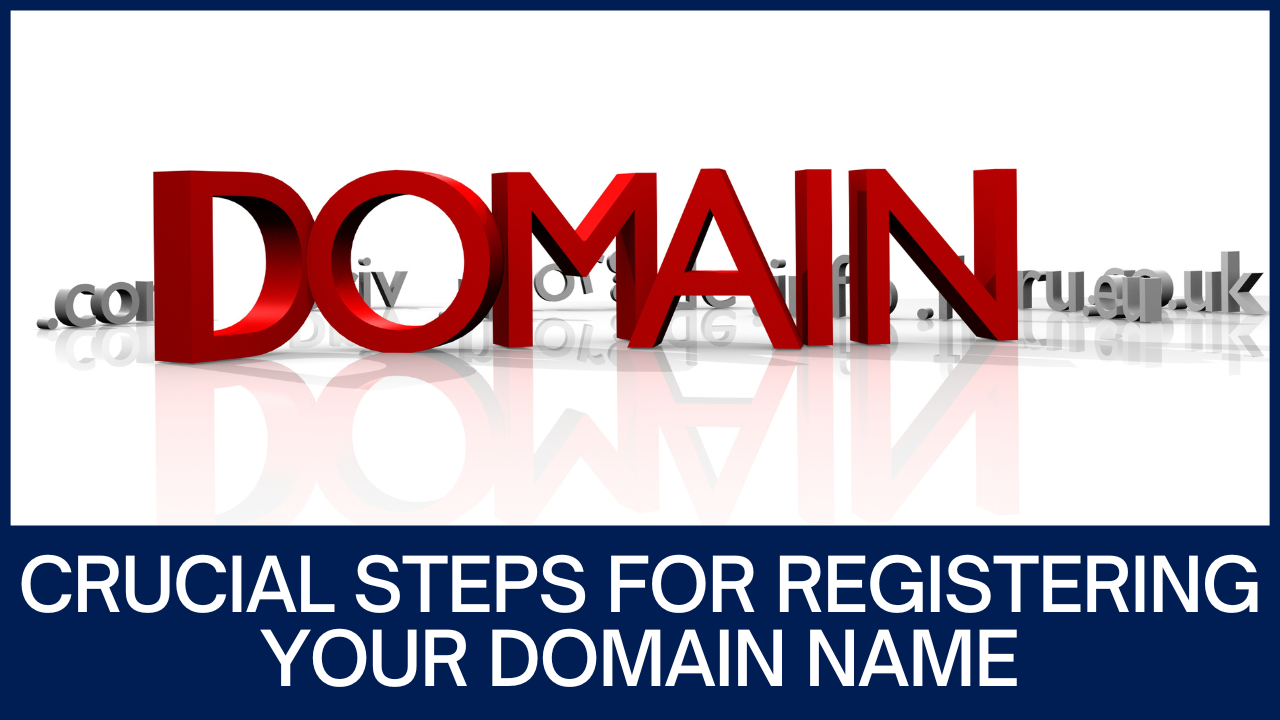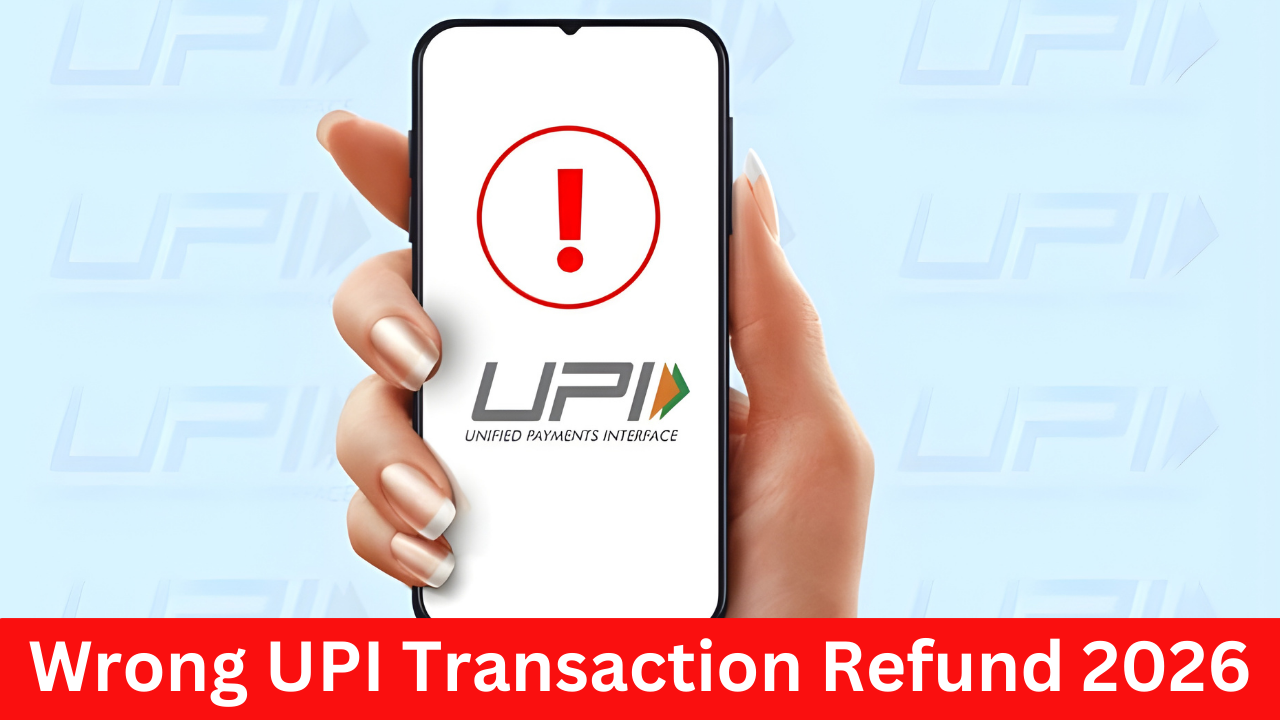Table of Contents
ToggleWhat’s Next After Buying a Domain? Key Steps to Follow Post-Purchase
Steps for Following Your Domain Name Registration, Owning a domain name is crucial for establishing a thriving online business. A memorable domain name enhances brand recognition and expands your reach to a broader audience.
However, acquiring a domain name marks just the initial phase of your digital marketing strategy.
In this guide, we’ll walk you through six essential steps following your domain purchase – from securing web hosting services to crafting a successful website.
Relocating is seldom a stress-free endeavor. Besides physically transferring your belongings, there’s a heap of administrative tasks like updating your address, forwarding mail, setting up utilities, notifying contacts of your new location, and updating essential documents.
Acquiring and setting up a domain can feel akin to moving into a new home – once you’ve selected and purchased your domain name, the hard work may seem complete. Yet, there’s still plenty of setup and administration awaiting.
Feeling overwhelmed? Don’t fret. This guide outlines the six critical actions to prioritize post-domain purchase. It steers you through vital steps, including establishing a domain-specific email address and arranging a dedicated business phone system.
Kudos on taking the initial stride to establish your online presence with a domain purchase! But now you might wonder, “I’ve bought a domain, what’s next?”
The subsequent vital step involves activating and verifying it through the domain registrar from which you made the purchase.
With that complete, you’re poised to delve into the exciting realm of web hosting and commence website construction. This article will navigate you through the essential post-domain purchase steps, ensuring a smooth and successful online journey.
Your domain registration signifies the inception of a website with revenue-generating potential. Following a meticulous domain name search and deliberating over potential website names, domain registration safeguards your chosen name from potential poachers. But the journey doesn’t end there. Now, it’s time to construct your online presence by following six straightforward steps.
Beyond Catchy: Understanding the Strategic Impact of Your Domain Name
When it comes to selecting a domain name, the internet is flooded with advice: “Keep it short! Relevant! Memorable!” While these tips are valuable, they often overlook a crucial aspect: the broader context of your business.
Did you know that your domain name not only shapes how people perceive your brand but also influences your marketing approach?
Domain names typically fall into two main categories: Discoverable and Brandable.
Discoverable domain names are practical, using dictionary terms or generic keywords that align with common search queries. This makes them easily recognizable and can attract “type-in” traffic from users unfamiliar with your brand but searching for related topics.
On the other hand, Brandable names are more creative and unique. They may be invented words, metaphors, or combinations of existing terms. While they don’t necessarily include keywords for easy search discovery, they have the potential to become iconic brands with the right marketing efforts (think Google or Apple).
Consider the type of name you’ve registered: Is it Discoverable or Brandable? Do you have the resources to invest in comprehensive marketing strategies if it falls into the latter category? Before building your business around your domain, ensure you have a solid plan for raising awareness and effectively bringing it to market.
Essential Steps for Every Domain Owner: Securing Your Name and Online Presence
Securing your domain name and establishing a robust online presence requires practical actions beyond just selecting a name type. Here are the crucial steps every domain owner should take:
- Privacy and Protection: Safeguard your personal information by opting for Private Domain Registration. This shields your details from being exploited by spammers, telemarketers, and bots, while still maintaining full control over your domain.
- Simplify Domain Management: Ensure continuity by enabling auto-renewal for your domain(s). This prevents the risk of losing your domain name due to expiration. For those managing a sizable portfolio, consider leveraging Platinum, an exclusive domain management service tailored to optimize your portfolio investment.
- Claim Your Name: Establish a foundation for the future by creating social media profiles using your domain name and acquiring a custom, professional email address. Proactive brand protection now can prevent future headaches. Additionally, if trademarking your name is on the agenda, investing in tools like AdultBlock can help keep your name clear of adult-themed spaces.
Taking these practical steps not only secures your domain but also sets the stage for a strong and enduring online presence.
Taking Your Domain Further: Crafting a Website or Blog
Ready to elevate your domain to the next level? Watching your idea flourish and thrive is incredibly rewarding.
To kickstart this journey, it’s crucial to define the purpose and goals of your website.
Understanding your site’s purpose sheds light on its requirements. For instance, if you’re launching a personal blog, eCommerce functionalities might not be necessary. Conversely, an online retail venture demands eCommerce capabilities, Terms of Service, and more.
Once you’ve outlined your requirements, consider how they shape your site’s design. Will a simple Website Builder suffice, or do you need the advanced features of an eCommerce Website Builder? Alternatively, should you enlist a professional to create a bespoke site that fulfills all your needs?
Here are 10 key considerations when compiling your site requirements list:
- Assess Your Abilities: Honestly evaluate if you have the time and expertise to bring your envisioned site to life.
- Determine Page Count: Define the number of pages your site will require.
- Map User Experience: Plan the desired user journey and interactions on your site.
- Allocate Site Storage: Ensure sufficient bandwidth to accommodate your content and future growth.
- Attend to Details: Consider all desired visitor interactions, from email options to forms and product listings.
- Establish Online Presence: Secure social media handles and professional email, integrating them with your website.
- Optimize for Devices: Ensure your site is responsive and looks good across various devices, including mobile.
- Prioritize Security: Invest in SSL and Sitelock to enhance visitor trust and safeguard data.
- Implement SEO Strategies: Develop a comprehensive SEO strategy to improve search engine visibility and drive traffic.
- Measure Performance: Define Key Performance Indicators (KPIs) to gauge the success of your site.
- Plan for Future Growth: Envision the trajectory of your online venture in 1 year and 5 years, and ensure your current actions align with future success.
By considering these factors and crafting a well-thought-out plan, you pave the way for a successful and impactful website or blog that resonates with your audience and achieves your objectives.
Finding Your Domain’s Home: Choosing a Web Hosting Service
So, you’ve secured your domain name, but now it needs a place to call home – a web host and hosting plan.
You essentially have two options: seek out a standalone web hosting service or opt for a domain registry and web hosting combo.
Chances are, you purchased your domain name from a service that also offers hosting plans. Many companies provide combined web hosting and domain name services, and there are several advantages to this approach.
Firstly, there’s no need to fret about connecting your domain and hosting – they seamlessly sync from the outset. Secondly, integrated services often come with additional package perks, streamlining your operations in the long term.
Take, for instance, Namecheap – a renowned web hosting and domain registry service. Here, you can register or transfer a domain name, host your website, and even design business cards, all within a single platform.
Setting Up Your Domain-Specific Email Address
Just like moving into a new residence, acquiring a domain-specific email address marks a pivotal step in establishing your online presence. It’s akin to obtaining a new postal address – a clear indication of where people can find and contact you.
Beyond the analogies, having a custom email address that aligns with your domain exudes a level of professionalism that generic email providers like Gmail or Hotmail can’t quite match.
Fortunately, most web hosting and domain registry services include domain-specific email addresses as part of their offerings. Typically, plans come with at least one free email account, with the option to add more as required. Some premium plans may even include multiple email accounts.
Armed with your new domain-specific email address, the possibilities are endless. From designing business cards to creating branded coffee mugs, you can leverage this professional touch to market your email address and promote your business name effectively.
Syncing Your Social Media with Your Online Presence
With your domain name, web host, and domain-specific email address sorted, it’s time to ensure your social media presence aligns seamlessly with your website and email.
Start by auditing your existing social media accounts and creating new ones if necessary. Check for availability of your exact business name or a close variation across platforms like Instagram, LinkedIn, Twitter, and others. Consistency in brand identity and tone across all platforms is key to reinforcing your business’s image.
Consider researching social media name availability before purchasing your domain name, as social media presence is integral to modern branding strategies.
If you can’t secure an exact match, incorporate a unique identifier like a country abbreviation (e.g., CoolStoreUS or CoolStoreUK) to maintain alignment with your business name.
Strive to use the same name consistently across all social media profiles to avoid confusion among your audience. This principle also applies to subdomains connected to platforms like Linktree and digital business cards, ensuring a cohesive online presence for your business.
Securing Your Business Identity: Registering and Trademarking Your Business
Imagine you’ve just launched a cutting-edge customer engagement software company. With a stellar company name, a website in development, a domain-specific email address, and cohesive social media profiles, you’re off to a strong start.
But before you celebrate, there’s a crucial step left to set up your business: registering and trademarking your business name.
The importance of this step is underscored by the steady rise in trademark applications over the years, surpassing one million in 2019 alone.
You have several avenues for registering your business name. Firstly, you must determine whether to operate as an LLC (limited liability company) or a corporation. This decision hinges on factors like the nature of your business, leadership structure, and tax considerations. Once chosen, you’ll need to file registration documents with your state’s agencies to formalize your business entity.
Trademarking your business provides added legal protection. While some states offer trademark registration, opting for federal trademark registration provides the most comprehensive coverage. Though more intricate and costly, federal trademark registration safeguards your business name nationally, affording greater legal protection and operational latitude.
By completing these steps, you secure your business identity and pave the way for future growth and success.
A Step-by-Step Guide for Building Your Website
Now that you’ve registered your domain name, it’s time to dive into building your website. You have a couple of options: you can hire a web developer, which can be costly, or you can leverage website builders or Content Management Systems (CMS) like WordPress.
With our user-friendly website builder, you can personalize a template using drag-and-drop technology, allowing you to create a stunning website in just minutes.
You don’t need to have every single page of your website fully developed before checking this step off your To-Do list. Start by creating the main pages that align with the purpose of your site. Consider including pages like:
- Homepage
- About
- Contact
Once these essentials are in place, you can gradually add sections for your blog, portfolio, eCommerce store, or any other features you envision for your website. Take it one step at a time, focusing on creating a solid foundation before expanding your site’s content and functionality.
Elevate Your Business Communications: Implementing Dedicated Phone and Fax Numbers
You’ve established your business with a dedicated website, email address, and social media presence. Now, avoid the common pitfall of using your personal cell phone number for business calls. Not only does this lack professionalism, but it also compromises your privacy.
Investing in dedicated small business phone and fax lines is essential to streamline operations and solidify your brand image across communications channels.
Opting for a cloud-based system is the optimal choice, offering a range of additional features that can revolutionize your workflow.
Consider Dialpad’s comprehensive cloud-based business phone system as an example. It provides HD calls across multiple devices and offers various plans to suit different budgetary needs. You can select a local or toll-free number, enabling customers to reach you from anywhere.
Dialpad’s virtual fax system enables seamless faxing, akin to sending and receiving emails. Say goodbye to bulky and costly equipment – it’s a convenient and eco-friendly solution.
With a modern business phone system like Dialpad, you can bring phone and fax capabilities into the 21st century, preserving your personal phone number for personal use while optimizing your business communications.
Creating Your Online Home: Designing and Developing Your Website
Similar to settling into a new residence and adding personal touches, once you’ve handled all the website administrative tasks, it’s time to design and develop your website.
A clear understanding of your business and brand identity serves as a solid foundation for website design. If the prospect of creating a website feels daunting, consider hiring a web developer to handle the task. Alternatively, numerous online platforms simplify the process for those willing to tackle it themselves. WordPress stands out as a popular choice, powering an impressive 39.5% of all websites on the Internet.
Once you’ve finalized the design and content, remember to continuously develop your website as your business evolves. Produce engaging content to captivate customers and generate leads. Implement an SEO strategy to optimize keywords and links, driving traffic to your site and maximizing its potential.
Also Read How to Log In to WordPress Using the Login URL
A Guide to Creating a Website with WordPress
WordPress stands out as a favored Content Management System (CMS), offering users a user-friendly dashboard for site management and a plethora of customization options through various plugins and themes.
Here’s a step-by-step guide to creating a website with WordPress:
- Install WordPress: Begin by installing WordPress on your web hosting account. Many hosting providers, like Hostinger, offer a convenient one-click installer for WordPress, streamlining the process.
- Choose a Theme: WordPress comes with default themes, such as Twenty Twenty-Three. However, you can explore and select themes from the WordPress theme directory or marketplaces like ThemeForest. Themes range from free options to premium ones with enhanced features.
- Install WordPress Plugins for Additional Features: WordPress plugins extend the functionality of your site. You can find thousands of free and premium plugins in the WordPress directory and third-party marketplaces. Popular plugins include Yoast SEO for enhancing SEO, WooCommerce for eCommerce functionality, Visual Composer for easy site building, W3 Total Cache for performance optimization, and UpdraftPlus for backups.
- Bonus: Start an Online Store with WooCommerce: For those interested in launching an online store, WooCommerce is a top recommendation. It offers features like inventory management, order tracking, and analytics. You can further enhance your store with WooCommerce extensions. You can install WooCommerce manually or through an auto-installer, but be cautious as the latter may delete your existing WordPress installation. Once installed, configure your store by adding products, setting up payment methods, and customizing the store layout.
By following these steps, you can leverage the power of WordPress to create a dynamic and feature-rich website tailored to your needs.
Effective Strategies to Promote or Sell Your Website
Promoting your business website or eCommerce store is crucial for increasing visibility and reaching your target audience. Here are several recommended methods to effectively promote your new site:
- Social Media Marketing: Utilize social media platforms to engage with your target customers. Join relevant public groups on Facebook, share expertise, gather industry insights, and promote your website. On Instagram and Twitter, use relevant hashtags to expand your reach. Incorporate social media widgets on your website for easy sharing and following. Focus your efforts on platforms where your ideal customers are active.
- Email Marketing: Implement email marketing campaigns to increase conversion rates and keep visitors informed about your latest updates. Types of email campaigns include newsletters, acquisition campaigns, retention emails, and promotional emails. Ensure your emails provide value, incorporate your business logo, include clear CTAs, and track campaign performance using plugins if using WordPress.
- Paid Advertising: Consider investing in paid advertising, particularly through Google Ads. Utilize the pay-per-click (PPC) model to display ads on search result pages and websites through search and display networks. Use tools like Google Keyword Planner to find relevant keywords and estimate costs per click. Set up Google Ads campaigns, incorporating compelling ad copy and relevant keywords to drive traffic to your site.
By employing these strategies effectively, you can enhance the visibility and success of your website or eCommerce store, ultimately driving traffic and boosting sales.
Guide to Selling Your Website or Domain Name
Understanding how to sell your domain name or website is essential, whether you’re rebranding your business, seeking to profit from domain flipping, or avoiding domain expiration without generating revenue.
To sell your domain effectively, follow these steps:
- Park Your Domain: Park your domain to prevent cybersquatting while it’s listed for sale.
- Assess Value: Evaluate the domain’s value based on factors like traffic, keywords, top-level domain (TLD), and length. Utilize resources like NameBio, ShortNames, and NamePros to gain insights into the domain name market.
- Pricing Strategy: Choose a pricing strategy based on market trends, domain value, and your desired profit margin.
- Sales Channels: Determine how to sell the domain name. Options include creating a dedicated landing page for individual sales or listing it on domain marketplaces like Afternic and Efty.
By implementing these strategies, you can maximize the chances of selling your website or domain name effectively, ensuring a smooth and profitable transaction.
A Guide to Navigating the Post-Domain Purchase Journey
Acquiring a domain name marks the initial step towards realizing various business objectives, from establishing an online presence to forging a robust brand identity. However, for novices, determining the subsequent actions can pose challenges.
In this article, we’ve delineated six crucial steps to undertake after purchasing a domain name:
- Obtain a Web Hosting Plan: Secure a suitable web hosting service to host your website or online store.
- Configure Nameservers: Connect your domain name to the appropriate nameservers to ensure proper functionality.
- Create a Custom Email Address: Establish a professional email address using your domain name to bolster brand credibility.
- Develop Your Website or Online Store: Create and launch your website or eCommerce platform to showcase your offerings to the world.
- Index Your Website: Submit your newly created website to search engines for enhanced visibility and accessibility.
- Promote or Sell Your Website: Implement strategies to promote your website, driving traffic and engagement, or explore options to sell it for profit.
For further inquiries, refer to our FAQ section. We welcome your feedback and invite you to engage in discussions in the comments section below. Best wishes on your digital journey!
FAQ’s for Steps for Following Your Domain Name Registration
What is the purpose of purchasing a domain name?
Answer: Purchasing a domain name is essential for establishing an online presence for your business or brand. It serves as your unique address on the internet, allowing customers to find and access your website easily.
How do I connect my domain name to a web hosting service?
Answer: To connect your domain name to a web hosting service, you need to update the domain's nameservers to point to the hosting provider's server. This can typically be done through your domain registrar's control panel or dashboard.
Why is it important to have a custom email address with my domain name?
Answer: Having a custom email address with your domain name adds a professional touch to your communication and strengthens your brand identity. It enhances credibility and trustworthiness in the eyes of your customers and stakeholders.
What steps are involved in developing a website or online store after purchasing a domain name?
Answer: After purchasing a domain name, the steps to develop a website or online store typically involve obtaining a web hosting plan, creating and designing the website, adding content and products, optimizing for search engines, and promoting the site to attract visitors.
How can I promote or sell my website effectively?
Answer: Promoting your website can be done through various channels such as social media marketing, email marketing, and paid advertising. If you decide to sell your website, you can list it on domain marketplaces or create a dedicated landing page for individual sales, following proper pricing strategies and marketing tactics.







